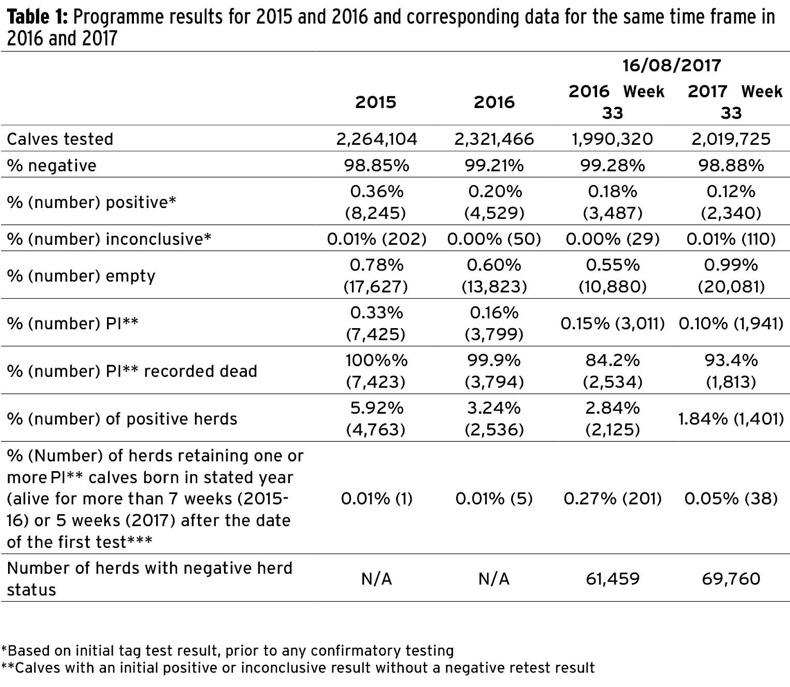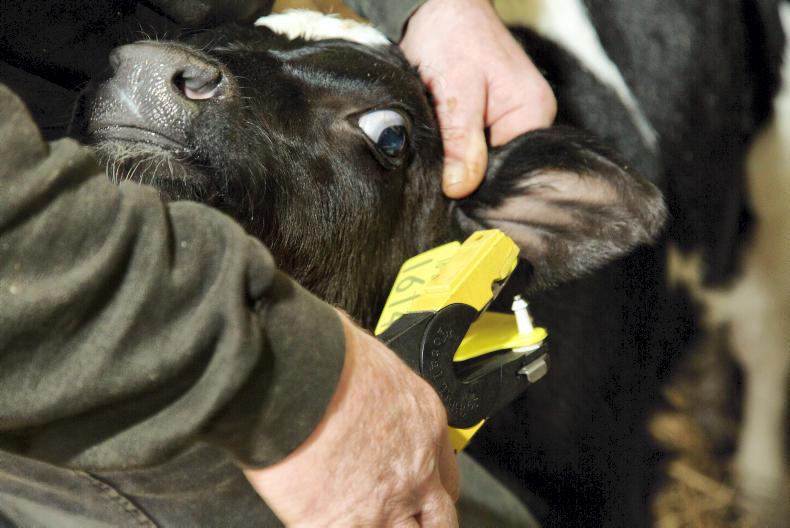Changes introduced to the Bovine Viral Diarrhoea (BVD) national eradication programme continue to generate improvements at farm level.
As detailed in Table 1, there are just 38 herds retaining one or more persistently infected (PI) animals born in 2017 from a total of 1,401 herds which had at least one PI animal.
This compares favourably with 201 herds still retaining PI animals for the corresponding week in 2016.

Faster removal of PI animals is stemming from changes to the Department of Agriculture run Financial Supports Programme (FSP), tighter movement restrictions introduced earlier in the year and a sharp rise in the number of BVD letters issued notifying neighbouring farmers of the presence of a PI animal.
Front-loading of payments
Front-loading of payments under the FSP has intensified the rate at which farmers have moved calves off their holding.
Beef herds will receive payment of €185 for each beef breed PI that is disposed of to a knackery, meat plant or abattoir within three weeks of the first test, while a reduced payment of €60 will apply where calves are disposed of within five weeks of the initial test.
A similar payment regime is in place for dairy heifers, with a payment of €150 for each dairy or dairy-cross heifer disposed of within three weeks, reducing to €35 where the animal is disposed of within five weeks of the initial test.
A payment of €30 was also introduced in 2017 for dairy bull calves disposed of within three weeks of the initial test and this is also said to be helping the swift removal of these lower-value calves.
Movement restrictions
Movement restrictions on herds maintaining a PI animal for more than five weeks after the date of the first positive or inconclusive test result have also been a key component of faster disposal, with just five herds still retaining a PI animal born in 2016.
These initiatives are greatly reducing the risk of further PIs developing in the herd or in neighbouring herds.
Lower incidence
The number of PI animals born in Irish herds has significantly reduced on a yearly basis, as detailed in the results in Table 1.
To date in 2017, there have been 1,941 PI animals identified with an initial positive or inconclusive test.
Of these, 1,813 have been recorded dead, leaving 128 PI animals alive across the 38 herds retaining PI animals.
The reduction in BVD prevalence has also increased the number of herds securing negative herd status, with the number standing at just under 69,760 head.
Another notable feature from the results is the number of empty samples that have been recorded in 2017, with 20,081, just shy of the number recorded in 2014.






 This is a subscriber-only article
This is a subscriber-only article






SHARING OPTIONS: